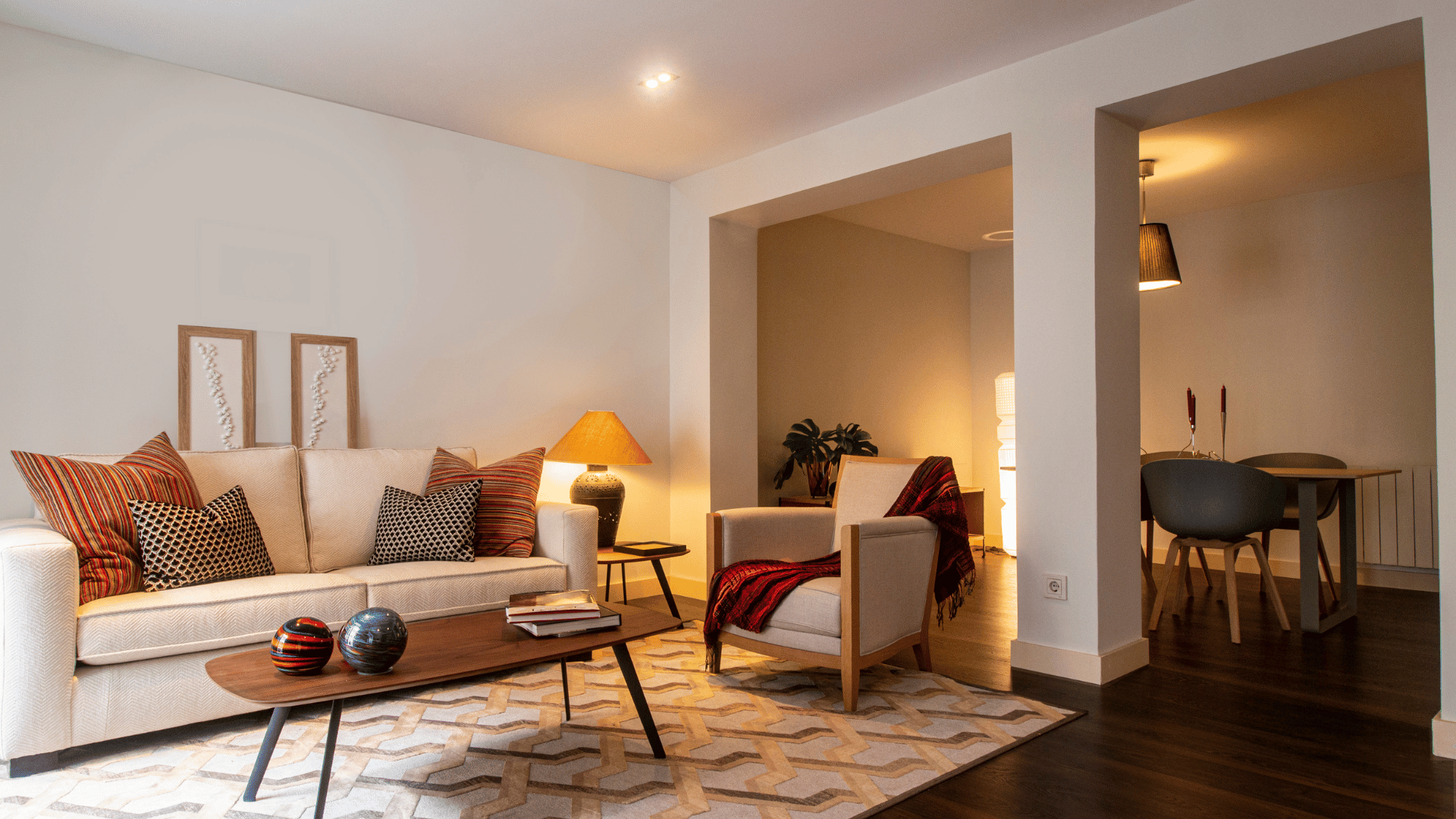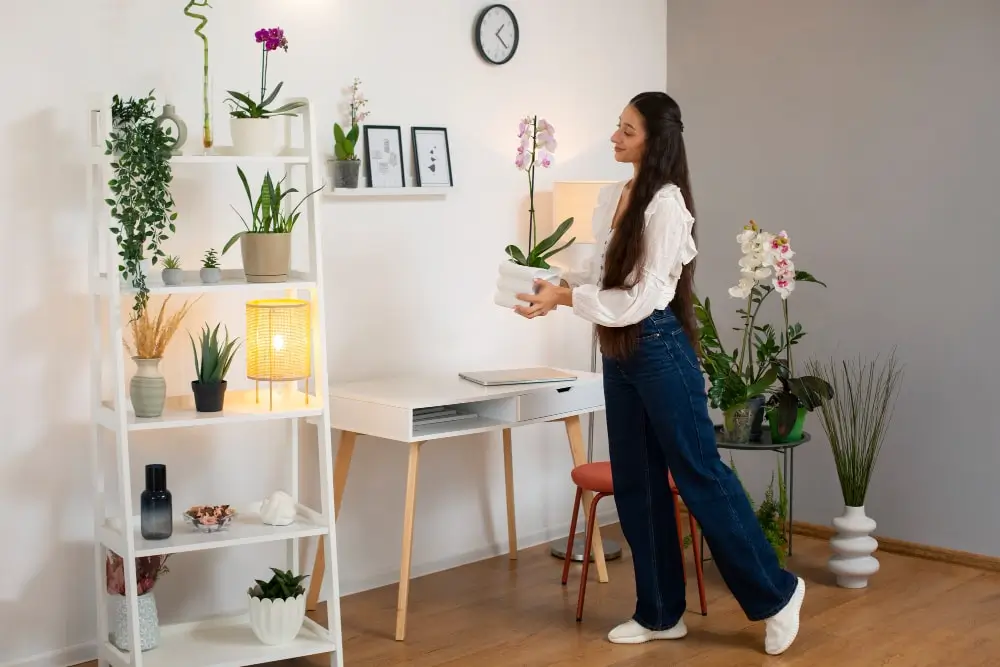Decorating a combined dining room and living room area can be a rewarding but challenging endeavor. It requires a delicate balance between functionality and aesthetics to create a space that is both inviting and efficient. Whether you're working with limited square footage or simply want to merge these two essential spaces seamlessly, these tips and ideas will guide you in transforming your combined living and dining room into a harmonious haven.
Define Zones with Furniture Arrangement
When dealing with a multifunctional space, it's crucial to define distinct zones for living and dining. Arrange furniture strategically to delineate these areas. Consider using area rugs to anchor and divide each space, providing a visual boundary that also adds a layer of texture and warmth.
Coordinate color schemes
Maintain a cohesive color scheme throughout the combined space. Opt for a neutral base and add pops of color with accents such as throw pillows, artwork walls, or table settings. This creates a unified look that ties the living and dining areas together seamlessly.
What colors are there?
In the ever-evolving realm of interior design, color combinations play a pivotal role in shaping the aesthetic landscape of homes. As of recent years, a notable trend in interior color schemes revolves around embracing soothing and nature-inspired tones. Earthy neutrals such as warm beiges, soft greens, light blues, and muted terracottas have gained popularity for their ability to create serene and comforting environments. These hues not only evoke a sense of calm but also seamlessly integrate with various design styles, from contemporary to bohemian.
Additionally, there has been a resurgence of interest in timeless and versatile colors like classic blues and deep greens, adding a touch of sophistication to living spaces. The trend toward nature-inspired color palettes reflects a desire for tranquility and a connection to the outdoors, fostering a harmonious ambiance within combined living and dining rooms. Integrating these trending colors and shades into your decor can contribute to a contemporary and inviting atmosphere that stands the test of time.
Choose versatile furniture.
Invest in furniture that serves dual purposes. For instance, a dining table that can double as a workspace or a coffee table with hidden storage can maximize functionality without compromising style. Additionally, consider open shelving units that can be used to display decor items in the living area and store dining essentials. Selecting the right furniture is a crucial aspect of designing a combined living room and kitchen space where functionality and aesthetics are co-equal, achieving a contemporary living room designed for art and functionality sake.
Choose the right type of furniture.
Opt for furniture that serves dual purposes, seamlessly decorating the combined living and dining room and blending the needs of both areas. Consider a dining table with a slim profile that can also function as a workspace, or choose versatile seating options that can be easily moved between the living and kitchen spaces. In terms of upholstery and finishes, lean towards materials that are easy to clean and maintain, given the potential for food spills and cooking activities in the kitchen area.
When it comes to scale, choose furniture that is proportionate to the size of the room, avoiding oversized pieces that may overwhelm the separate space. To enhance flexibility, consider furniture with wheels or lightweight designs that can be rearranged effortlessly to accommodate different activities or social gatherings.
Lastly, maintaining a cohesive style across the living and kitchen areas is essential, so look for furniture that complements each other in terms of color, material, and design aesthetic. By carefully curating furniture with these considerations in mind, you can create a unified, stylish, and functional separate space that effortlessly combines the living and kitchen areas.
Lighting Magic
Proper lighting is essential for creating the right ambiance in both the living and dining spaces. Pendant lights or chandeliers above the dining table provide focused illumination, while floor, ceiling, and table lamps in the living area contribute to a cozy atmosphere. Use dimmers to control the intensity of the light, allowing for flexibility in different scenarios.
Optimize vertical space.
When the entire space is limited, make the most of the vertical space. Tall bookshelves or wall-mounted cabinets not only serve as storage solutions but also draw the eye upward, making the room feel more spacious. Utilize wall space for decorative elements like artwork or mirrors to add depth.
Create a focal point.
Establish a focal point in both the living and dining areas to anchor the design. In the living room, it might be a statement piece of furniture or a fireplace. In the dining area, the focal point could be an eye-catching light fixture or a feature wall with textured paint or wallpaper; a mini gallery wall is a good addition, too!
Selecting an ideal focal point is a pivotal decision in interior design, as it anchors the visual interest and defines the overall theme of a space. To choose the perfect focal point, consider the architectural features of the room—whether it's a stunning hallway, large windows with a scenic view, or a unique structural element.
If there isn't a pre-existing focal point, you can create one by incorporating a statement piece of furniture, an eye-catching artwork, or an elaborate light fixture. Pay attention to the room's layout and choose a focal point that aligns with the natural flow and function of the space.
In combined living and dining rooms, consider creating separate focal points for each area to maintain a sense of balance. Additionally, factor in scale and proportion, ensuring that the chosen focal point complements the size of the room. Ultimately, the ideal focal point should draw the eye, serve as a conversation starter, and contribute to the overall cohesion and visual appeal of the house and interior design.
Maintain consistent flooring.
For a seamless transition between the living and dining areas, maintain consistent flooring. Whether it's hardwood, laminate, or tile, a unified floor covering visually connects the two spaces and creates a cohesive flow.
Scale Matters
Pay attention to the scale of the furniture and decor elements. In a combined space, it's crucial to strike a balance between large and small pieces. Avoid overcrowding the room with oversized furniture and art, and opt for appropriately sized items that complement each other.
Flexible seating options
Consider flexible seating options that can be easily moved between the living and dining areas. Ottomans, benches, or stools not only add extra seating when needed but can also serve as decorative elements.
Flexible and functional additions
When designing a combined living and dining space, the key lies in selecting furniture that not only enhances the visual appeal but also serves practical purposes. Here are some examples of functional furniture that a designer can seamlessly integrate into both areas:
Convertible dining tables
Opt for dining tables with extension capabilities or those that can transform into different shapes. This versatility allows you to adapt the table size to accommodate various occasions, from intimate dinners to larger gatherings.
Nesting Tables
Nesting tables are a space-saving marvel. These versatile pieces can be stacked together for a compact look or spread out to provide additional surfaces for snacks, drinks, or decor items in both the living and dining areas.
Sofa Beds
For a combined space that may occasionally double as a bedroom or a guest room, a sofa bed provides a practical solution. During the day, it serves as comfortable seating in the living area, and at night, it can be transformed into a cozy bed.
Mobile Kitchen Islands
A mobile kitchen island can serve as both a prep area and a casual dining space. Choose one with wheels for easy mobility, allowing you to adapt the kitchen layout to suit various activities in the combined space.
Accessorize Thoughtfully
Accessories play a vital role in tying the decor together. Choose complementary accessories for both areas, such as coordinating throw pillows or vases. This combination of attention to detail contributes to a unified and polished look.
Curtains and drapes
Use curtains or drapes to add softness and privacy to both the living and dining areas. Choose one shade of fabric that complements the overall design and ensures continuity throughout the space.
Incorporate Greenery
Bring the outdoors inside with the addition of plants. Plants not only purify the air but also add a touch of nature to your combined living and dining room. Consider placing them strategically to enhance the visual appeal of both areas.
Decorating a combined living and dining room requires a thoughtful approach that balances functionality and aesthetics. By defining zones, coordinating color schemes, choosing versatile furniture, optimizing vertical space, and incorporating these other tips, you can transform your space into a harmonious haven that seamlessly blends living and dining areas. Remember that personalizing the space with your unique style is key to creating a home that reflects your personality and provides a welcoming atmosphere for both daily activities and special occasions.










